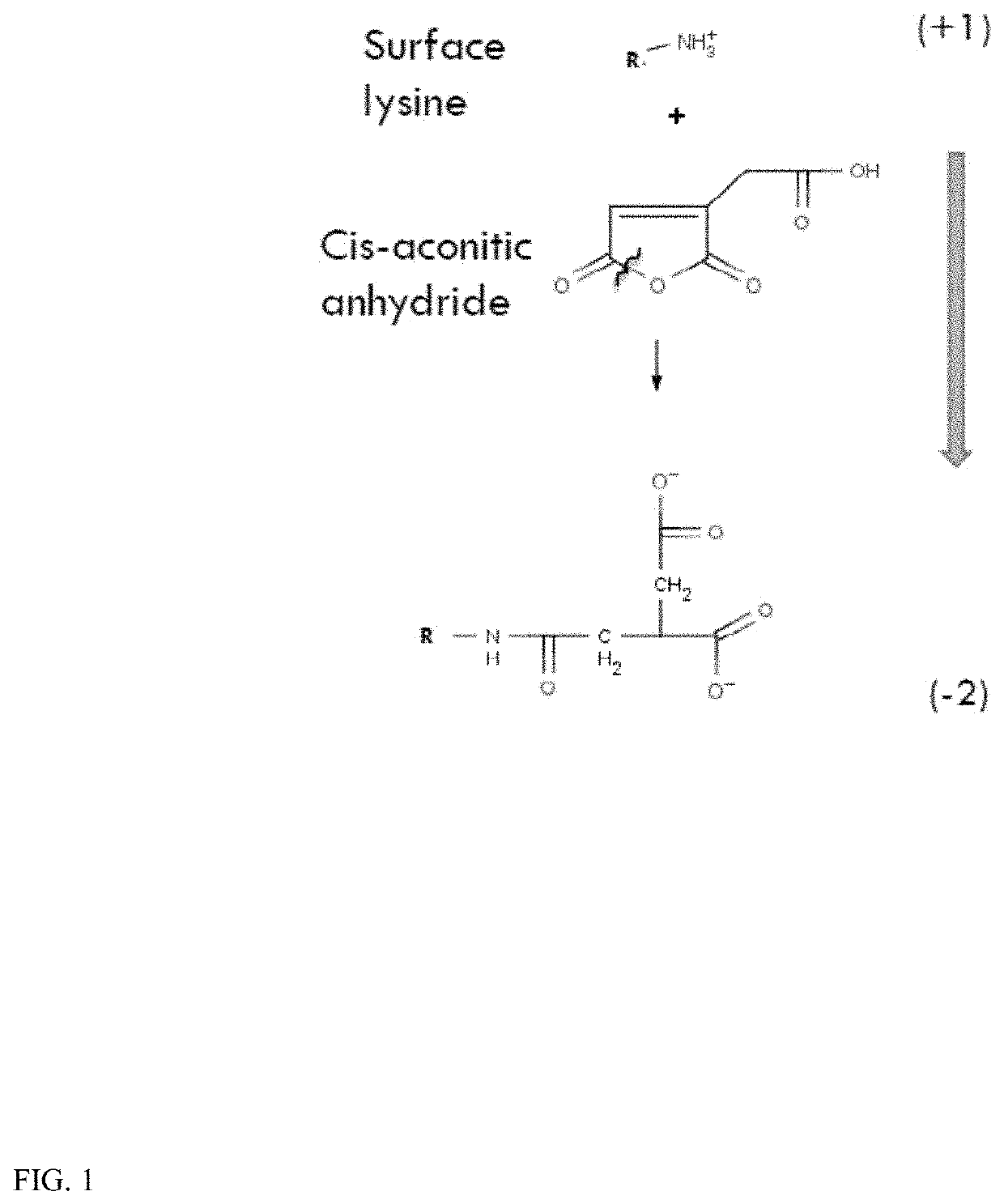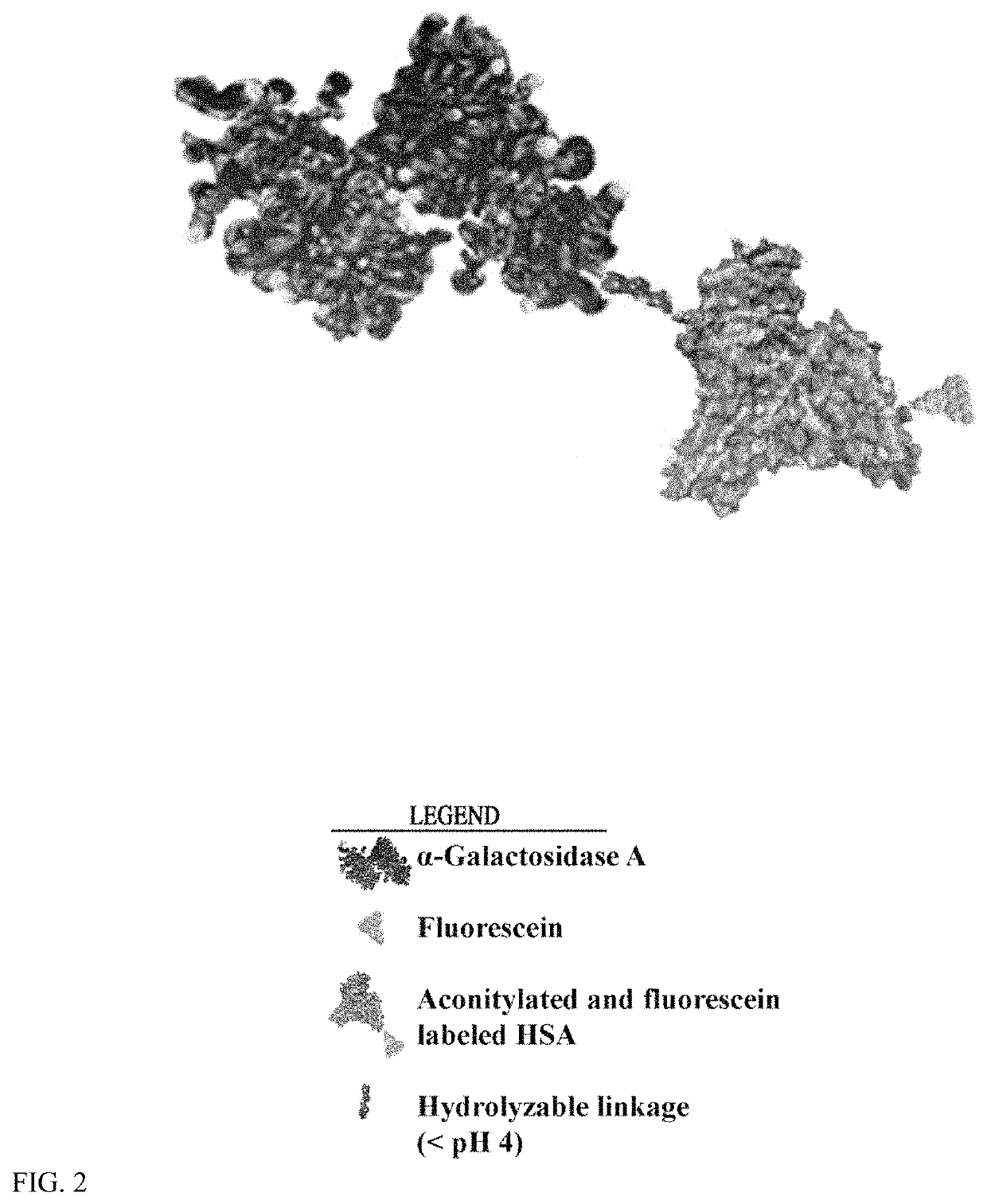Scavenger receptor uptake for Fabry disease enzyme replacement therapy
a technology of fabry disease and enzyme replacement therapy, applied in the field of fabry disease enzyme replacement therapy, can solve the problems of burdensome treatment regimen, inability to meet the needs of patients,
- Summary
- Abstract
- Description
- Claims
- Application Information
AI Technical Summary
Problems solved by technology
Method used
Image
Examples
example 1
[0138]Expression and characterization of glycosylated and catalytically active recombinant human α-Gal A. We previously isolated human α-Gal A cDNA and genomic clones, and expressed the cDNAs in bacteria, insect cells, and Pichia pastoris derivatives, and we analyzed the effects of carboxyl-terminal deletions on enzyme activity. We reported activity for the recombinant human α-Gal A using the natural in vivo substrate GB3 (trihexosylceramide, ceramide trihexoside; CTH) and the artificial substrates 4-methylumbelliferyl-α-D-galactopyranoside (MUG) and para-nitrophenyl-α-D-galactopyranoside (PNPG). All three substrates will be used for quantitative enzyme assays, along with assays using antibodies to GB3 and lissamine rhodamine ceramide trihexoside in cell culture assays. Fabry fibroblasts in cell culture take up the recombinant α-Gal A produced in insect cells and P. pastoris as measured using direct enzyme assays. We also measured the uptake of AlexaFluor488-labeled α-Gal A using a ...
example 2
Reaction of Cis-aconitic Anhydride with HSA
[0142]The reaction is carried out in PBS buffer with 2 mg / ml HSA-fluorescein and 10 fold excess cis-aconitic anhydride at pH 8.5 at 25° C. for two hours. The aconitylated-HSA-fluorescein product was separated from free label with Sepandex G-25 chromatography.
example 3
Conjugation of α-galactosidase A to Fluorescently-Labeled Aconitylated-HSA (aco-HSA) Fluorescent Labeling of HSA.
[0143]First, HSA was labeled with fluorescein. This reaction was carried out in PBS buffer with 2 mg / ml HSA and 20 fold excess NHS-fluorescein at pH 6.5 at 25° C. for one hour to give a low yield labeling reaction (F / P ratio2 groups for aconitylation reaction. The HSA-fluorescein product was separated from free label with Sepandex G-25 chromatograhy.
[0144]Next, cis-aconitic anhydride aconitylation of HSA-fluorescein was done. The reaction was carried out in PBS buffer with 2 mg / ml HSA-fluorescein and 10 fold excess cis-aconitic anhydride at pH 8.5 at 25° C. two hours. The aco-HSA-fluorescein product was separated from free label with Sepandex G-25 chromatograhy.
α-Gal A-PEG3300-maleimide Reaction.
[0145]Next, α-galactosidase A is conjugated to PEG3300-maleimide. The reaction is carried out in PBS buffer with 2 mg / ml α-Gal A and 20 fold excess SM(PEG)8 (Pierce, catalog numbe...
PUM
| Property | Measurement | Unit |
|---|---|---|
| body weight | aaaaa | aaaaa |
| diameter | aaaaa | aaaaa |
| pH | aaaaa | aaaaa |
Abstract
Description
Claims
Application Information
 Login to view more
Login to view more - R&D Engineer
- R&D Manager
- IP Professional
- Industry Leading Data Capabilities
- Powerful AI technology
- Patent DNA Extraction
Browse by: Latest US Patents, China's latest patents, Technical Efficacy Thesaurus, Application Domain, Technology Topic.
© 2024 PatSnap. All rights reserved.Legal|Privacy policy|Modern Slavery Act Transparency Statement|Sitemap



